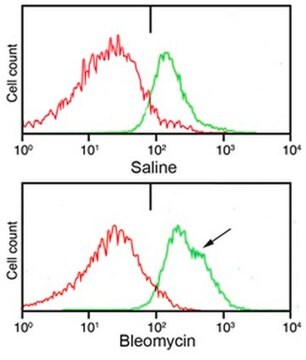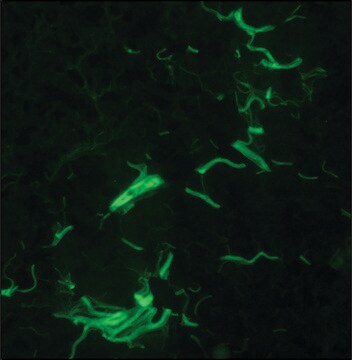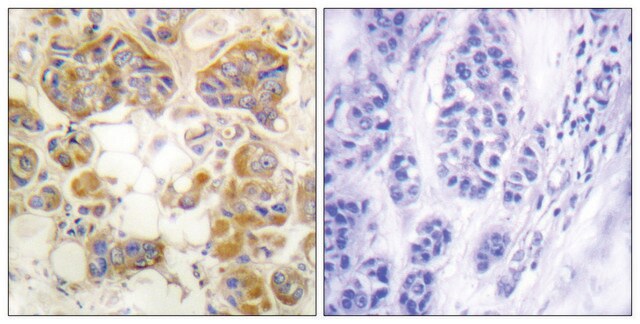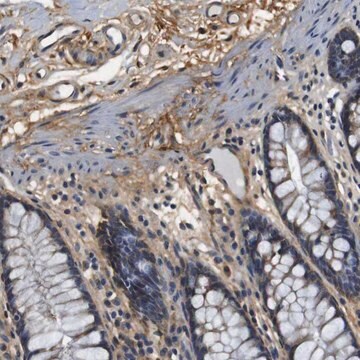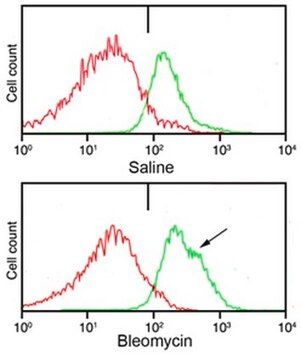MAB1912
Anti-Collagen Type I (COL1A1) Antibody
CHEMICON®, rat monoclonal, M-58
Synonym(s):
Anti-Procollagen Antibody, Clone M-58 Anti-Procollagen, Type I Procollagen Detection
About This Item
Recommended Products
Product Name
Anti-Procollagen Type I Antibody, NT, clone M-58, culture supernatant, clone M-58, Chemicon®
biological source
rat
Quality Level
antibody form
culture supernatant
clone
M-58, monoclonal
species reactivity
human
should not react with
rat, hamster, mouse
manufacturer/tradename
Chemicon®
technique(s)
immunohistochemistry: suitable (paraffin)
isotype
IgG2α
NCBI accession no.
UniProt accession no.
target post-translational modification
unmodified
Gene Information
human ... COL1A1(1277)
Specificity
Application
Suitable for formaldehyde/formalin fixed paraffin sections, suggested starting dilution 1:100-1:1000, after treatment with 1% trypsin, 20 minutes at room temperature. Does not stain mature collagen fibers in tissue. Localized intracellularly in cells producing pro-collagen I. Not recommended for Western Blots Optimal working dilutions must be determined by end user.
Analysis Note
Skin tissue
Other Notes
Legal Information
Storage Class Code
10 - Combustible liquids
WGK
WGK 2
Certificates of Analysis (COA)
Search for Certificates of Analysis (COA) by entering the products Lot/Batch Number. Lot and Batch Numbers can be found on a product’s label following the words ‘Lot’ or ‘Batch’.
Already Own This Product?
Find documentation for the products that you have recently purchased in the Document Library.
Our team of scientists has experience in all areas of research including Life Science, Material Science, Chemical Synthesis, Chromatography, Analytical and many others.
Contact Technical Service
